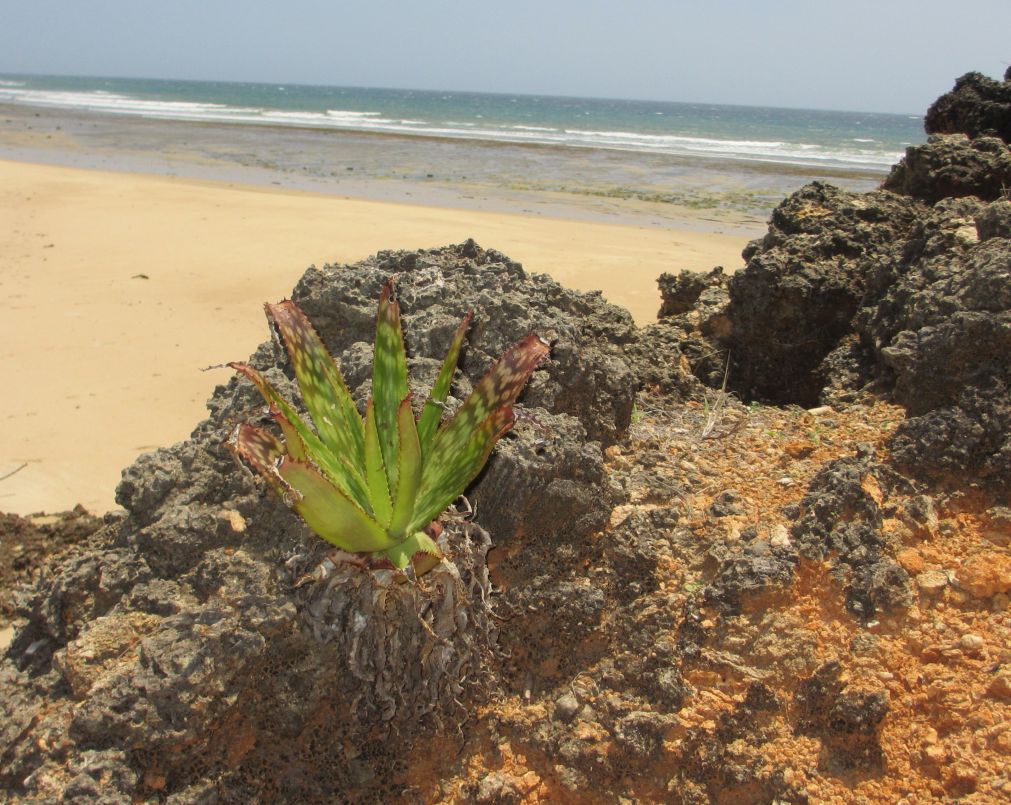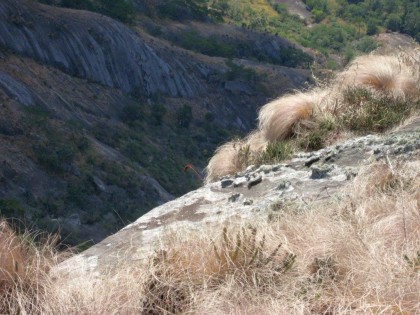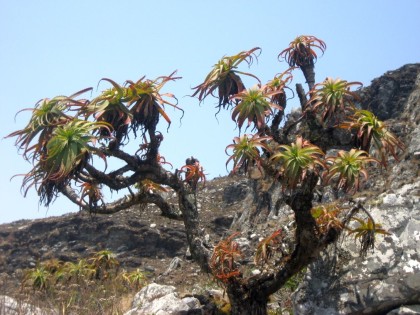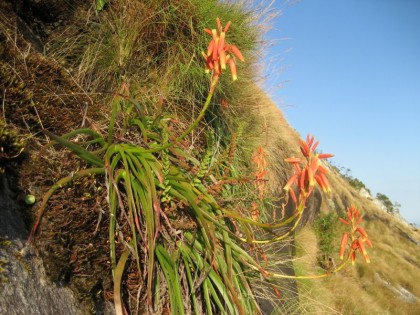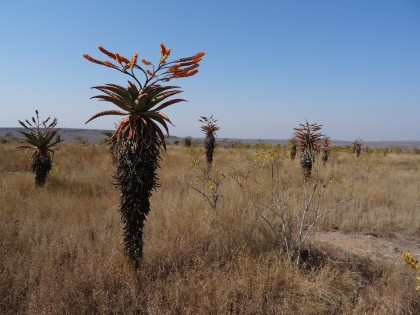(photograph = Aloe menyharthii, Ton Rulkens)
Introduction
Africa is the home of many succulent plants, especially southern Africa. However, one genus can be found in most countries in dry areas or rock outcrops. Aloes span the breadth and width of Africa including Madagascar and extend into the Saudi Arabian peninsula.
The Details
From Planzafrica.com
The swollen and succulent leaves of aloes are more or less lance- or sword-shaped in outline and boat-shaped in cross-section. Leaves are arranged in terminal clusters (rosettes) and are armed along their margins with usually sharp, but sometimes soft, teeth. Most are evergreen, but the grass aloes are deciduous.
Although they have a familiar basic shape, there are multiple variations of that theme. Aloes come in all sizes from a few-inches tall to nearly 30-ft tall. They form ground plants, shrubs, vine-like plants, and trees. Their flowers are held upright or sideways, and various species bloom in different seasons. Flowers may be greenish-brown, orange, or scarlet. Aloe species grow from sea level to nearly 5000 ft in mountains.
Many aloes make excellent pot plants, but they may need more than a 6-inch pot. They do well in fast-draining soil, but many species tolerate extra water and nutrient-poor soils. Almost all aloes appreciate half-day sun or more. Most aloes don’t tolerate frosts and those that do often only tolerate light frosts.
A potted aloe can be stored for the cold season by drying the soil and letting the plant go dormant with drought. When the soil if fully dry, the plant can be stored for several months in a basement or unheated garage if temperatures don’t drop below 35F. After a winter in storage that plants can be brought out when the danger of frosts is past.
Aloes are easily grown from seed, but some need years to mature. Seeds may be purchased from Silver Hill Seeds in Cape Town, South Africa.
Related Reading: African Aloe Ecology Review
